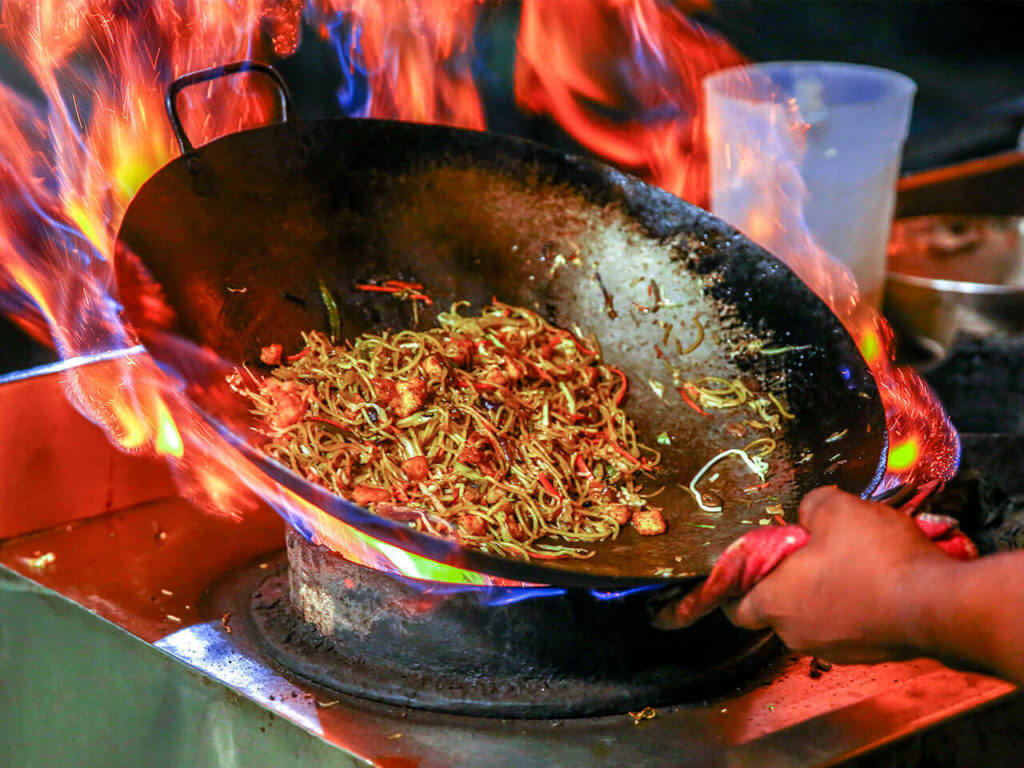These days, with several ways of cooking Chinese food being on hand, food aficionados have discerned a fresh cooking stage in the field of ' ' culinary' arts. These new procedures provide cooks and chefs just the right combination of hues, flavours, essence and food texture of the cooking culture of China. Generally, there is no change is the essential ingredients but the cooking technique makes all the difference in preparing the dishes. Every food dish can be cooked in an entirely different manner by implementing varied cooking methods.
A few of the essential measures of Chinese ' Culinary' procedures can be emphasized as frying, stewing, boiling, braising, simmering, sauteing, steaming and smoking. Frying has a prominent role to play in Chinese ' Culinary' Procedures and it is thought to be amongst the most significant activities in recipe preparation.
Frying can be sub-classified as quick-frying, deep- and slippery-frying. In addition, this process involves taking into account many factors, which are dependent on the kind of ingredients that is utilized. For example, to retain the flavour and juiciness of meat, frying is preferred; whereas, where vegetables are concerned, frying makes them nice and crisp. In the arena of fast foods, the swiftness of the Chinese ' Culinary' Procedures plays a predominant role in cooking Chinese food where the food ingredients are quickly stirred before frying.
Shallow-frying or sauteing is another regular feature of the Chinese ' Culinary' Procedure. Sauteing consumes far less oil as compared with deep-frying and needs moderate temperatures as against stir-frying. This ensures that the food is soft in the inside and crispy on the outside.
Sauce making usually succeeds sauteing. In addition, boiling, simmering, stewing and braising are the other Chinese ' Culinary' ' Techniques' employed for food preparation. When parboiling, the cut and cleaned ingredients are placed in a big container to enable them to float. Then the ingredients are subjected to high temperatures. Boiling over a lengthy period of time not only kills the taste but also the food’s nutritional quality to a certain degree. In order to prevent this, a majority of food preparation is generally carried out over low heat to ensure that the nutritional value is retained.
Cold Mixing and smoking measures of the Chinese ' Culinary' Procedures entail that the food is cooked in advance whereas roasting involves seasoning the raw marinated ingredients prior to barbequing them over an open flame.
In Cold Mixing, scalded or parboiled ingredients are blended in salads and subsequently chilled prior to serving. Lastly, the poaching process involves cooking the ingredients in a liquid, a degree under the boiling point. The poaching technique is most suitable for preparing fish dishes, wherein cooking is continued until the fish becomes soft and tender. In conclusion, these Chinese ' Culinary' Procedures are a select few ways to enhance the flavour of Chinese cuisine and make them appealing to food buffs.

